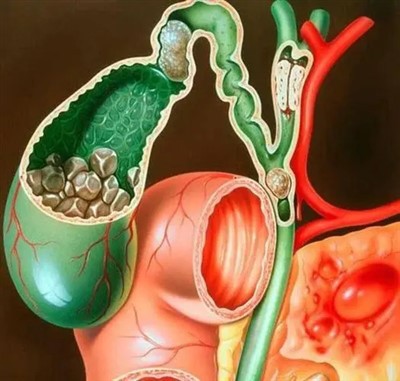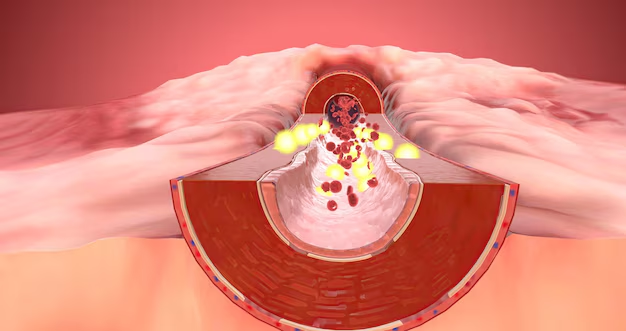
The Role of Surgery in Gallbladder Cancer
Surgery is the primary treatment for gallbladder cancer, and it is the only curative option available. However, not all patients with gallbladder cancer are candidates for surgery. The effectiveness of surgical treatment depends on how early the cancer is detected and whether it has spread beyond the gallbladder. The goals of surgery are to remove the tumor, prevent further spread, and improve the patient’s quality of life.
The main types of surgical interventions used for gallbladder cancer include:
- Cholecystectomy: Removal of the gallbladder, which is often performed if the cancer is confined to the organ itself.
- Radical Cholecystectomy: A more extensive surgery involving the removal of the gallbladder, surrounding tissues, and nearby lymph nodes, which may be required if the cancer has spread locally.
- Liver Resection: In some cases, part of the liver may need to be removed if the cancer has spread to liver tissue.
- Palliative Surgery: If the cancer is inoperable, surgery may be performed to relieve symptoms or improve bile flow, such as bile duct stenting or bypass surgery.
The decision to undergo surgery is based on several factors, and it is essential to evaluate the patient’s specific condition before determining the appropriate surgical approach.
When Is Surgery Suitable for Gallbladder Cancer?
Surgical intervention is considered for gallbladder cancer in the following scenarios:

1. Early-Stage Gallbladder Cancer
For patients diagnosed with early-stage gallbladder cancer, surgery offers the best chance for a cure. Early-stage cancer is typically confined to the gallbladder without spread to nearby organs or lymph nodes. In such cases, the patient may undergo a simple cholecystectomy, which involves the removal of the gallbladder. This procedure is often successful in treating early-stage tumors, and the prognosis is generally favorable.
2. Localized Gallbladder Cancer (Stage I and II)
In patients with localized tumors, where cancer is confined to the gallbladder and nearby tissues, radical cholecystectomy may be recommended. This procedure not only removes the gallbladder but also includes the excision of surrounding tissue and lymph nodes to ensure complete removal of the cancerous cells. For stage I and II cancers, surgery can provide long-term survival if the cancer has not spread significantly.
3. Resectable Advanced-Stage Gallbladder Cancer (Stage III)
In some cases, advanced-stage gallbladder cancer that has spread to nearby organs or lymph nodes may still be operable if the disease is localized enough to be resected surgically. This is known as borderline resectable cancer. If the tumor has invaded surrounding tissues such as the liver or bile ducts but can still be completely removed, surgery may be performed. However, the chances of a successful outcome in such cases depend heavily on the extent of cancer spread and the patient’s ability to tolerate surgery.
4. Patients with a Good Performance Status
For surgery to be considered a viable option, the patient must be in relatively good overall health. This includes having an adequate liver function, a well-preserved immune system, and the physical strength to recover from major surgery. Those who are frail or have other comorbidities may not be suitable candidates for surgery. A careful evaluation of the patient’s performance status is essential before making a decision.
5. Palliative Surgery
In certain cases, when the cancer is too advanced to be completely removed, palliative surgery may be performed. This type of surgery does not aim to cure the cancer but to alleviate symptoms, such as bile duct obstruction or jaundice, which can significantly impact the patient’s quality of life. Palliative procedures may include:
- Bile Duct Bypass: To allow bile to flow from the liver to the intestines if the bile ducts are blocked by the tumor.
- Biliary Stenting: Inserting a tube (stent) to keep the bile ducts open and relieve jaundice.
Palliative surgery can help manage symptoms and improve comfort, but it does not treat the underlying cancer.
Factors Affecting Surgical Eligibility
Several factors determine whether a patient with gallbladder cancer is a candidate for surgery, including:

- Stage of the Cancer
- The earlier the cancer is diagnosed, the higher the likelihood of surgical success. Stage I and II cancers, which are confined to the gallbladder or nearby tissues, are more likely to be surgically treated. However, for advanced-stage cancers (Stage III and IV), surgery may not be possible, depending on the spread of the tumor.
- Extent of Tumor Spread
- If the tumor has spread to distant organs (e.g., the liver, peritoneum, or distant lymph nodes), surgery is generally not an option. However, if the cancer is locally advanced but still confined to a region that can be safely removed, surgery may be possible.
- Liver Function and Health
- Patients must have sufficient liver function to withstand the stress of surgery. If the cancer has significantly damaged the liver or caused cirrhosis, surgery may not be recommended. Liver resection may also be necessary if the cancer has spread to the liver.
- Presence of Metastasis
- If gallbladder cancer has metastasized to distant organs or lymph nodes, surgery is unlikely to be curative. In such cases, systemic treatments like chemotherapy or radiation may be more appropriate.
- Patient’s Overall Health
- The patient’s physical condition and ability to recover from surgery play a critical role in determining surgical eligibility. Elderly patients or those with other medical conditions may not be suitable candidates for major surgery.
- Access to Multidisciplinary Care
- Gallbladder cancer treatment often requires a multidisciplinary approach, involving surgeons, oncologists, radiologists, and pathologists. Centers of excellence with experience in gallbladder cancer may offer better outcomes for surgery and adjuvant therapies.
Challenges in Surgery for Gallbladder Cancer
While surgery offers the best chance for cure, performing surgery on patients with gallbladder cancer can be challenging due to the following reasons:
- Late Diagnosis
- Gallbladder cancer is often diagnosed at advanced stages when surgery may not be an option. Early detection remains one of the biggest challenges in improving outcomes for this cancer.
- Anatomical Complexity
- The gallbladder is located near critical structures such as the liver, bile ducts, and major blood vessels. Surgical removal of the gallbladder and surrounding tissues must be done carefully to avoid damage to these structures.
- High Risk of Recurrence
- Even after successful surgery, there is a high risk of cancer recurrence due to the aggressive nature of gallbladder cancer. This underscores the importance of follow-up care and additional treatments, such as chemotherapy or radiation, in certain cases.
Surgical intervention remains the cornerstone of treatment for gallbladder cancer, but it is only suitable for a specific group of patients. Early-stage gallbladder cancer offers the best chances for a cure through surgery, whereas advanced-stage cancers may require more complex and palliative interventions. The decision to undergo surgery depends on a careful evaluation of the cancer’s stage, the patient’s overall health, and the potential for a complete tumor resection. With advancements in surgical techniques and early detection methods, more patients may benefit from surgical interventions, ultimately improving their prognosis and quality of life.





